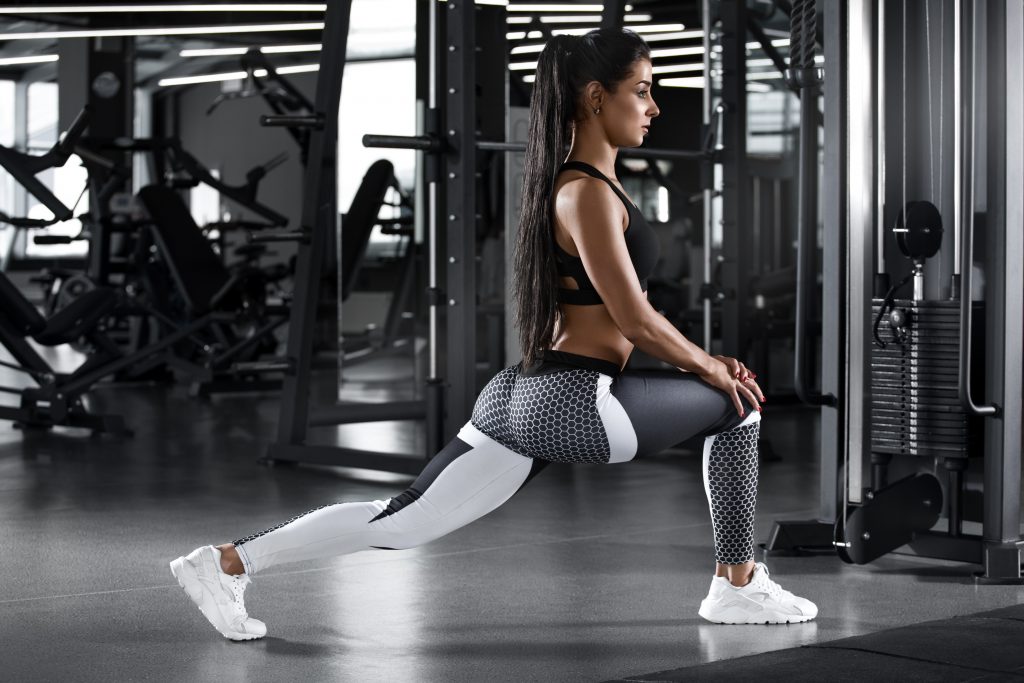Mobility training benefits any type of workout but is often neglected. So many people miss out on the benefits of it. With more mobility, you will be less likely to develop chronic injuries or hit plateaus. Mobility also remedies existing injuries and benefits form and performance. In this post, we look at how to get the best out of your workout with mobility training.
Before we delve into the many ways mobility training benefits your workout, let’s take a look at what mobility actually means.
What is Mobility?
Most people know what flexibility is. But often, people confuse this with mobility. There is a difference between the two. Flexibility refers to the ability of your joints to move pain-free and without stiffness through a range of motion. For example, flexibility is when you are able to lift your leg further with the assistance of your arms.
However, with mobility, you are able to control the whole range of motion with just the muscles. Mobility refers to the strength of the muscle in this range of motion. For example, you would be able to control the entire movement of the leg with just the leg muscles. Unlike flexibility, there is no requirement for any assistance to perform the move.
Now we’ve covered what it is, let’s look at how mobility training benefits your workout.
The Importance of Mobility
Mobility is essential because it prepares our bodies for the stress of training. It is a vital contributor to reducing the risk of injuries as well as improving technique and range of movement. It is important to note that strength alone isn’t enough to have good mobility.

Commonly, an individual will walk into the gym, go straight to the resistance area and begin lifting. At best, they may do a quick 5 minute warm-up on an exercise bike or elliptical trainer. The warm-should not be neglected. This being said, it is the bit in between that warm up and hitting the weights room that is important. This is where mobility training comes in. We will now discuss the mobility training benefits that all gym users should take advantage of.
How Mobility Training Benefits Your Workout
1. A More Effective Warmup
Mobility training benefits your workout in ways that a quick warm-up cannot. During mobility training, blood is being moved to the surrounding tissues. Synovial fluid, the fluid in our joints that helps them to glide freely, is carried into the working joints. An example of this would be to perform hip circles to warm up the hips. The blood is transported to the hip flexors, glutes and external rotators, which are the muscles that move the leg. Synovial fluid lubricates the hip in preparation for exercise.
2. Reduced Risk of Injury
One of the biggest mobility training benefits is the reduced risk of injury. If there is any restriction to a moving joint, then there is a high risk of injury, especially if you like to lift heavy.
3. Improved Technique and Range of Movement
Mobility training benefits your form. When muscles and joints are more flexible, we get an increased range of motion. This allows us to perform exercises with better technique. For example, if we have tight leg muscles, then we will struggle to lower in a squat or perform a deadlift with correct posture.
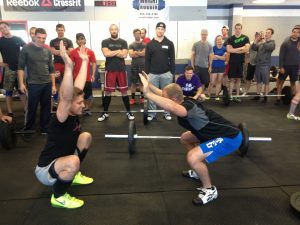
Having a better technique, especially in such a compound movement, can further reduce injury risk (Faigenbaum and Myer, 2010). Figure 1 shows an example of technique in squats with and without good mobility.
Many people believe that merely performing static stretches can achieve the above. However, there’s a difference between the effect of static stretching, and how mobility training benefits your workout.
Static Stretching Versus Dynamic Mobility Stretching
Stretching prevents injury, decrease soreness, and improve performance (Andersen, 2005). Many people incorporate static stretching into their routine. However, dynamic stretches – part of mobility training – are not so widely used.
This being said, research shows that dynamic stretching, or stretching while moving, appears to be more effective than static stretching as part of your warm-up. Below we discuss the mobility training benefits of dynamic stretching in comparison to static.
Static Stretches
Static stretching usually consists of holding positions with no movement. They tend to only focus on the main muscle groups, such as quads, hamstrings, calf and arm muscles (Andersen, 2005). While they are useful in increasing range of motion if performed correctly and for long enough, they can, in fact, be detrimental as part of a warm-up (Page, 2012). For example, static stretches are linked to a decrease in leg press performance (Bacurau et al. 2009) and knee extensor concentric torque (Cramer et al. 2005).

Like in the examples above, static stretches appear to actually decrease muscle-force production capacity (Wilson et al. 2010). This loss of strength and performance has been named “stretch-induced strength loss” (McHugh & Cosgrave, 2010). Static stretches, therefore, shouldn’t be part of a warm-up. Instead, they should be and performed in the cool-down. They also need to be held for long enough (30+ seconds) to be beneficial (Harvard Medical School, 2013). However, it is easy to rush through static stretching without proper form. This is not so much the case for dynamic stretching.
Dynamic Stretches
Dynamic stretches, on the other hand, are often a static stretch performed with movement. Doing these results in many mobility training benefits. For example, dynamic stretches keep your heart rate higher than static ones. This is important during and after a warm-up, and better suited to sports that require running or jumping (Page, 2012). An example of a dynamic stretch would be a set of walking lunges, instead of a static lunge forward. This being said, you need to ensure that you perform enough dynamic stretches, with the right quality.
Now we have discussed the numerous ways mobility training benefits you, let’s look at how to do it.
Types of Mobility Training Exercise
There are many ways to reap the mobility training benefits above. Mobility exercises take many forms. For example, some require only your bodyweight, whereas others use various types of equipment. This can include resistance bands, foam rollers, barbells or poles.
Body Weight
There are many different exercises that can be used to increase mobility. Using your bodyweight is a wise place to start. Most exercises have regressions for those just beginning. There are also progressions if you are more advanced. If you’re just beginning, these mobility drills will get easier with practice and patience.
Foam Rolling
Many mobility training benefits can come from foam rolling. However, some people shy away from foam rolling because it can hurt. Unfortunately, if it is painful, this is probably a sign that you need to do more of it. Also, it is common to spend too little time foam rolling. The foam roller needs to move slowly over the muscles, while you use as much of your body weight as possible to increase the tension.
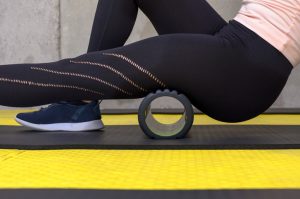
Resistance Bands, Poles and Barbells
Resistance bands, as well as poles and barbells, are a fantastic way to get the mobility training benefits that bodyweight stretching cannot achieve. If performed correctly, this equipment will allow you to take the muscles to a much greater stretch.
As mentioned, for those just starting out, try bodyweight drills first. Below are some exercises to get you started.
Body Weight Mobility Exercises
Below are some bodyweight and floor drills that are easily performed, in a gym or at home.
1. Thoracic Spine Windmills
The thoracic spin runs from the base of your neck to the area between your shoulder blades. Good mobility in this area allows you to move your arms freely over your head and turn side to side. If you have reduced mobility you can get shoulder problems and pain, develop poor posture and upper back pain.
To perform the windmills, first, lie on your side, and bend your knees and hips to just past 90 degrees. Rest your knees beside you on the floor. Then, straighten the bottom leg and rest the top leg on a foam roller or towel. Extend both arms together straight out in front of you, keeping your palms together. Lift and rotate your top arm away from you, opening up your chest to the ceiling. Hold for about 3 seconds and then slowly return it to the starting position. Repeat a few times on each side.
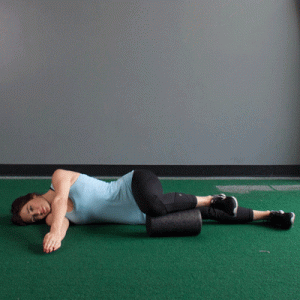
2. Shoulder Pass Throughs
If you are a sufferer of poor posture, you are likely to be tight through your chest and the front of your shoulders.
To perform the shoulder pass through, hold a broomstick or pipe in the overhand grip, as wide as you need to. Maintain straight arms and begin to lift the stick in front of you to above your head. Avoid hyperextending your back. Once you have taken it as far back as possible, hold in the end position for a couple of seconds before returning to the start position. Then repeat a few more times.
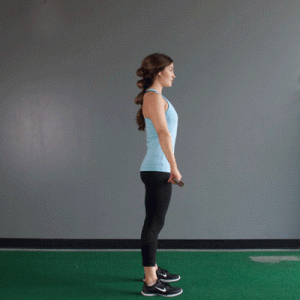
3. Hip Openers
It’s vital to warm up the hip joints as they contribute significantly to balance and stability. Hip mobility training benefits all types of workout.
To perform the hip openers, lift one knee up to your chest and make a circle with your knee. Bring the knee across your body and then out to the side. Repeat on the other side. You can perform these static or walking.
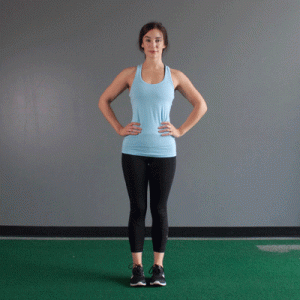
4. Spiderman Walks
One of the best exercises for mobility training benefits is the spiderman walk. This is because it hits multiple joints. To perform the spiderman walk, start with a forward lunge with an extended range of motion to stretch out the hip flexor. Stay there for a few seconds and push the hips down to increase the stretch. From there, bring your pelvis back, straightening the front leg and stretching the back of your hamstring. After this, return to the starting lunge and take your hand closest to your forward foot and twist it to the sky, with your head following your hand. Swap sides, and repeat a few times.
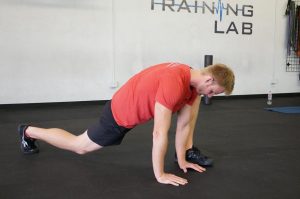
5. Deep Squat
This exercise as part of mobility training benefits the hips and ankles. To perform the deep squat, start with your feet shoulder width apart. From there, lower your hips down towards your ankles. Ensure that your feet stay flat on the ground. If this is difficult, work your way up to where you can sit with your chest up for several minutes. Feel free to support yourself a little at first to allow you to get lower.
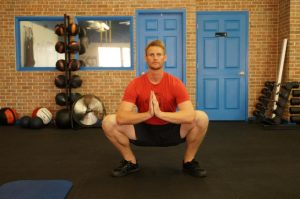
Conclusion
There are numerous benefits of mobility training in both the gym and broader life. Mobility exercises as part of your warm-up reduce your risk of injury and increase strength and power. As well as this, better mobility results in better technique. Dedicating 5-10 minutes at the beginning of your session to mobility training is all it takes to reap these benefits.
It’s important to note the difference between static stretching and dynamic mobility training. Static stretches ate vital at improving flexibility, but reduce performance when done during a warm-up. So save static stretching for the cool-down after a workout.
Why not incorporate mobility training as part of your workout plan? To read up on how to choose the right workout plan, click here.
